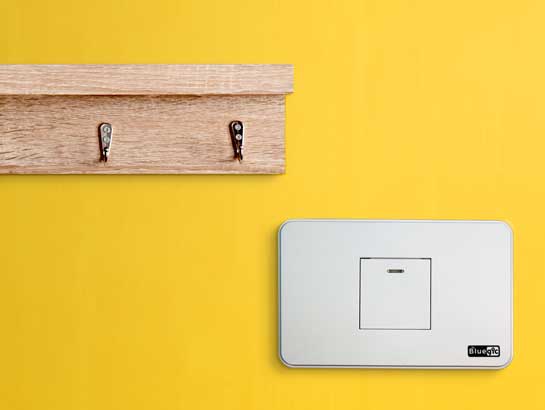
The Philips Hue White and Color Ambiance Slim Downlight has a flat lens surface and can simply be inserted into a hole in your ceiling and connected to power without needing a can or junction box. You can tune the light quality from warm 2,200 K to blazing white 6,500 K. You set it up and control it using the Hue app (more on that below) and should have a Hue Hub on your Wi-Fi network in order for it to be automated and remotely controllable. The Philips Hue White Ambiance 4″ Retrofit Recessed Downlight is a tunable white retrofit fixture that mimics the look of a curved PAR-style bulb and inserts easily into a 4-inch can-style ceiling light receptacle (it has flexible tabs that grab onto the receptacle to keep it secure). That makes them seamless in your home, but, as already noted, a potential source of conflict. Philips makes smart ceiling fixtures that have the same benefits of the company’s bulbs but lay flat against a ceiling and connect to your existing wall switches. Like lamps, in-ceiling fixtures and can-style ceiling lights are also easily upgradeable to smart lights. Hesitation over using an app to control it shouldn’t keep you from reaping the rewards of smart lights. The Philips Hue White and Color Ambiance A19 Starter Kit, one of our long-standing picks, makes wielding that power easy. Smart bulbs allow you to harness that power by tuning the color temperature to whatever inspires you at any given time, from bright daylight to warm candlelight and from, in the case of color bulbs, millions of tints.
If you have bought an LED bulb only to discover it makes everyone in the room look seasick or makes once vibrant rooms seem yellow and dingy, you understand that lighting has a lot of psychological power. If you have hesitated to adopt smart lighting, or this particular technological scenario is already a plague upon your home, low-cost wireless smart switches can fix that and bring peace to all parties. I have found salvation via a simple solution. Alas, a smart house divided cannot stand. Personal confession: Some members of my household regularly trigger a smart-home meltdown by flipping off the switches that power all the smart lighting, rendering them, well, stupid. This material may not be published, broadcast, rewritten or redistributed.Smart-home confession: It can be tedious to have to consult a phone or smart speaker just so you can turn off smart lights (there, I said it). It's too early to tell which system will prevail, but Quirky's partnership with GE, as well as its distribution through Home Depot, could give it an edge.Ĭopyright 2014 Toms Guides, a TechMediaNetwork company. However, Wink faces competition in this still nascent category from companies such as Staples and Lowes, who themselves have launched their own lines of smart home products. The seven products announced today by Quirky bring its portfolio of Wink connected-home devices to 47, and range from $15 lightbulbs to $578 water heaters. Quirky also launches the $40 Tripper, a window and door sensor the $35 Overflow, a water leak monitor Ascend ($90), a device to make your garage door smart Tapt ($60), a smart wall switch that will still let you control smart LED bulbs even when the power is off and Outlink ($50), an in-wall outlet that lets you monitor your energy use.

I like the idea of using multiple sensors to measure the temperature-indeed, Ecobee, another smart-home thermostat has a similar strategy-but I think the lack of visual cues on the Norm itself may turn off those who simply want to turn a dial to change the temperature. Like many other Wink products, users will need to have installed the Wink Hub ($50) or Wink Relay Touchscreen Controller ($300) in order to interact with the Norm. Users can tell the system to turn on their air conditioning or heating based on the temperature in one room, or on an average of all the temperatures throughout your house. Norm, which costs $80, can connect to other Norms throughout your house, or other Quirky Wink devices, many of which also have temperature and humidity sensors.

Unlike most other thermostats, which provide readouts of the temperature, the Norm just has a single button on its face you're meant to control it using a smartphone app. The Quirky Norm, as it's called, is an unassuming white box that fits where your regular thermostat would go.

Quirky, a crowdfunding product innovation company along with its partner GE, today announced several additions to its Wink smart home line of products, chief among them a thermostat that uses sensors throughout your house to get a better picture of the temperature indoors.


 0 kommentar(er)
0 kommentar(er)
